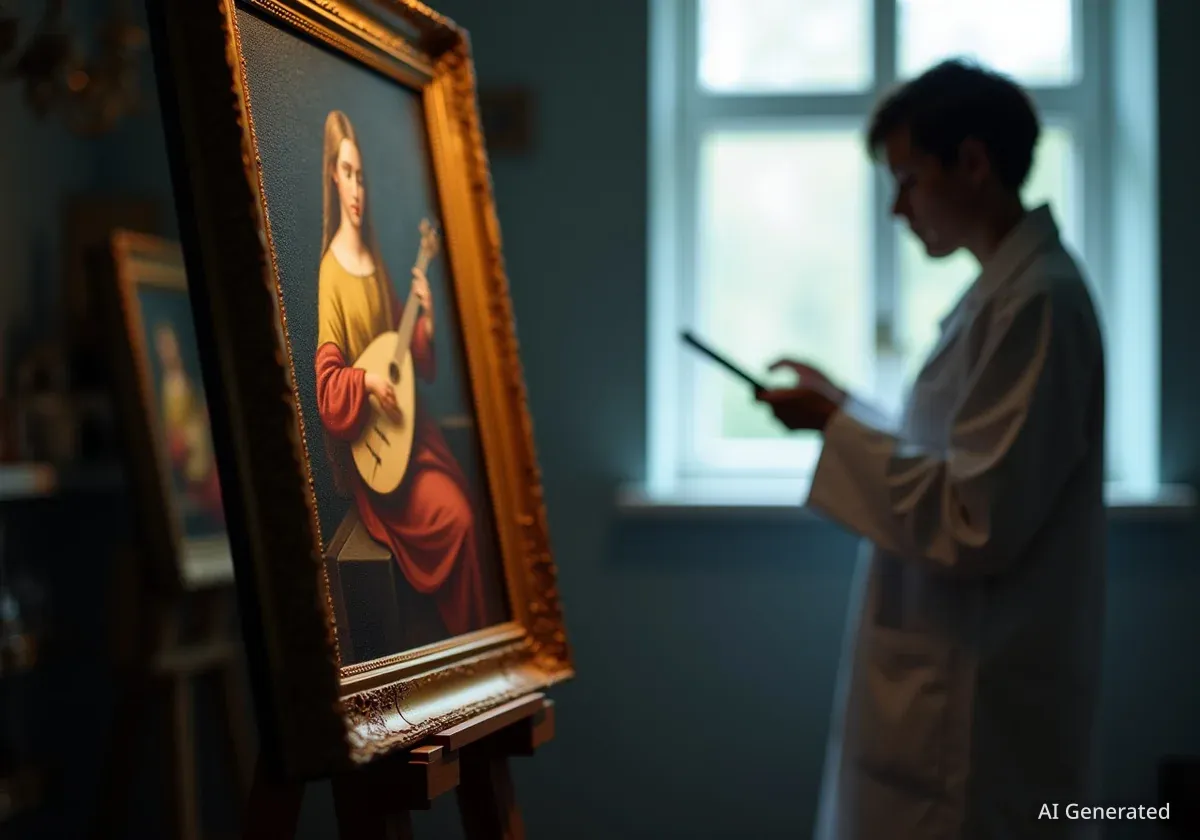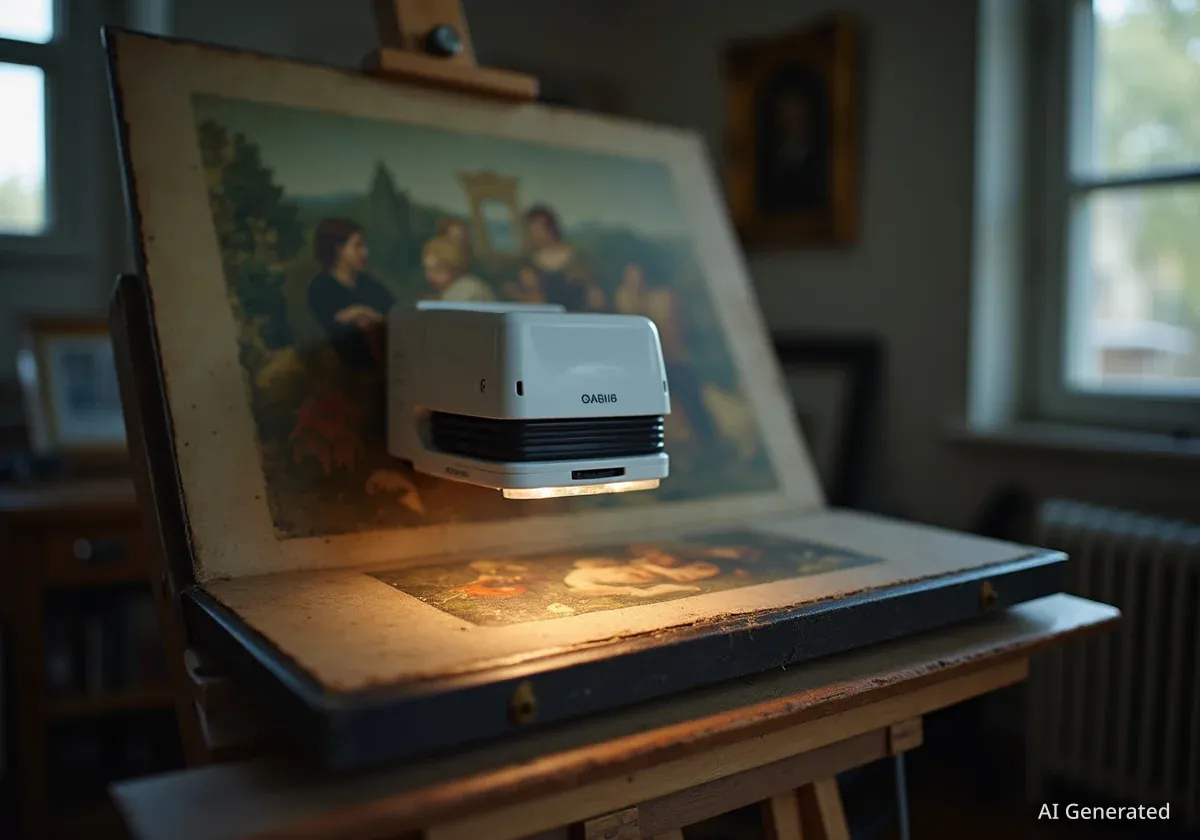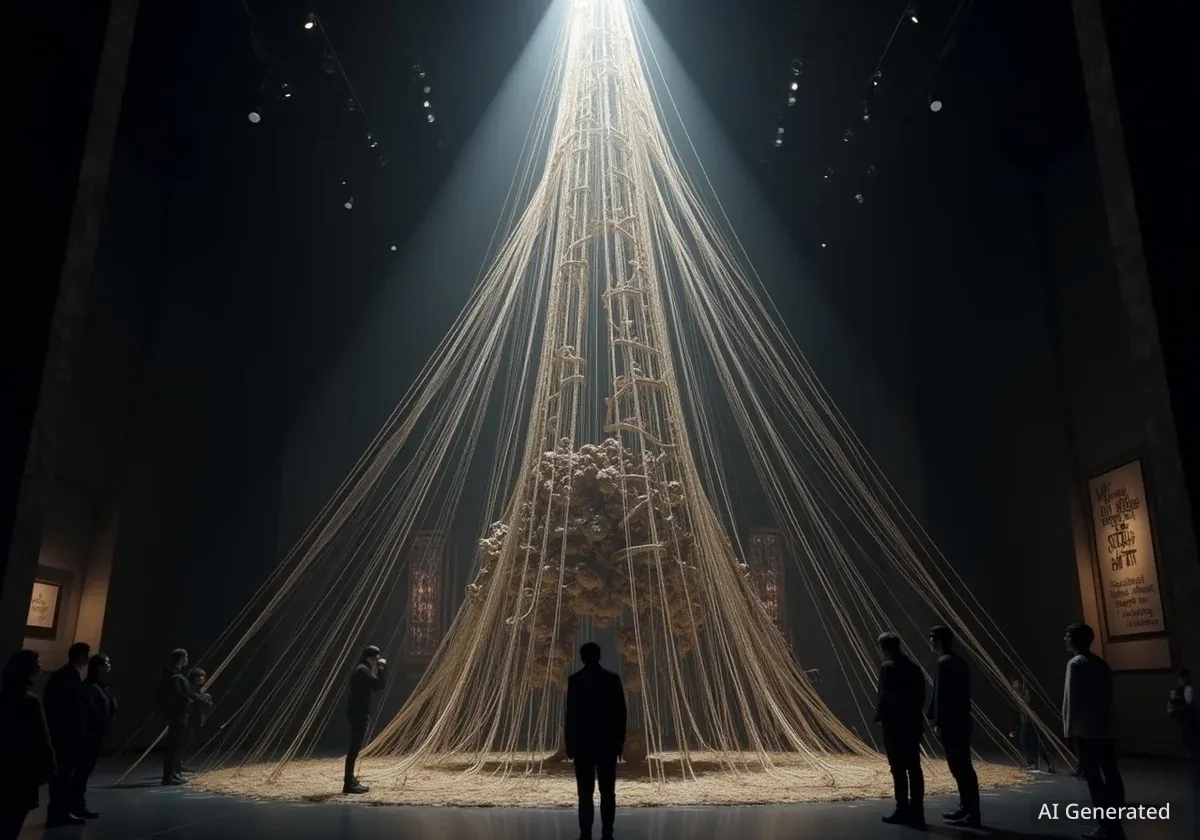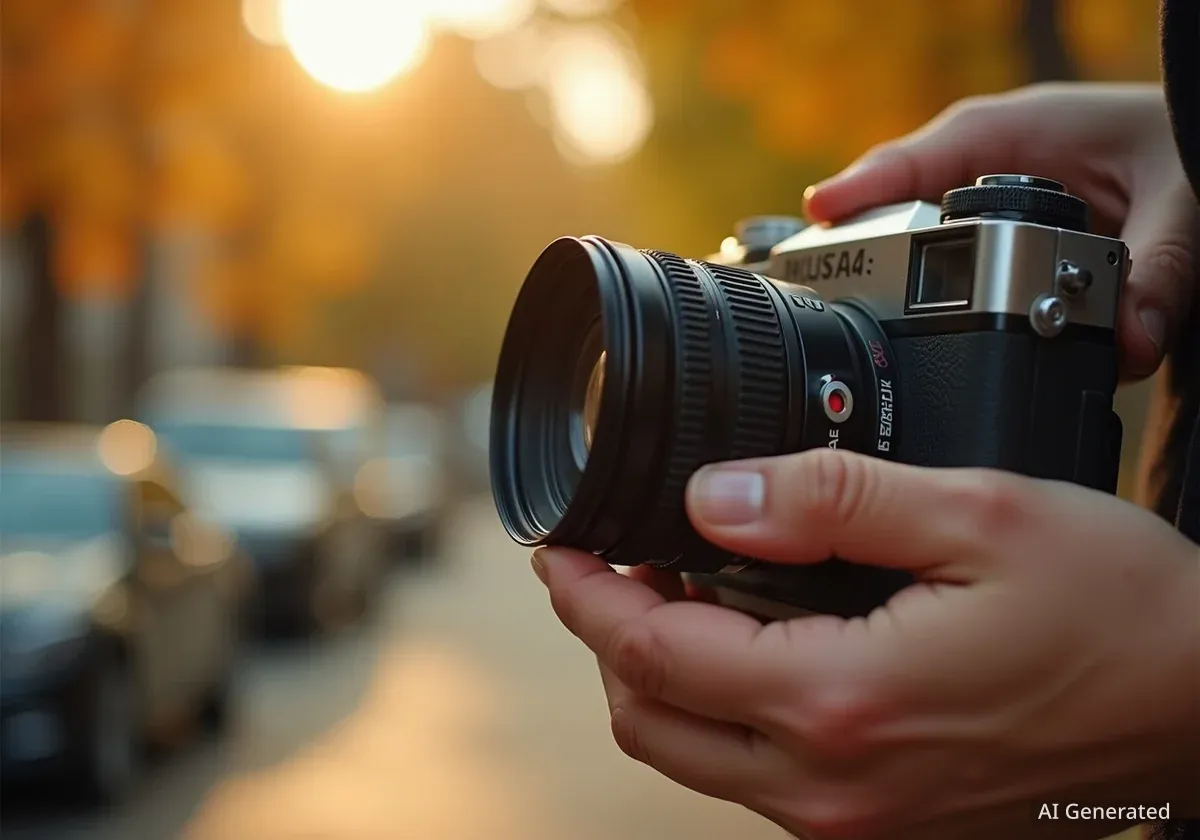A Swiss artificial intelligence company, Art Recognition, claims to have identified a painting previously thought to be a copy as an original work by the Baroque Italian master Caravaggio. This assertion challenges long-standing attributions made by major institutions like Sotheby's and the Metropolitan Museum of Art, sparking debate in the art world.
Key Takeaways
- Art Recognition's AI system claims an 85.7% likelihood that 'The Lute Player' from the Badminton Estate is an authentic Caravaggio.
- This contradicts previous assessments by Sotheby's and the Metropolitan Museum of Art.
- Caravaggio is known for his dramatic use of light and shadow, with few surviving works.
- The painting is one of three versions, with others in the State Hermitage Museum and the Wildenstein Collection.
- Art experts and institutions have expressed skepticism regarding the AI's findings.
AI Analysis Identifies 'The Lute Player' as Original
Art Recognition, a Swiss AI research firm, has stated that a painting titled 'The Lute Player,' formerly housed at the Badminton Estate in Gloucestershire, is an authentic work by Michelangelo Merisi da Caravaggio. The company's artificial intelligence system concluded there is an 85.7% probability that the artwork is an original Caravaggio. This high probability rating, according to Art Recognition's co-founder and CEO Carina Popovici, indicates a very strong likelihood of authenticity.
The firm emphasizes its ability to authenticate artworks rapidly, often within days, using only a photograph. On its website, Art Recognition lists several case studies where it claims to have authenticated pieces by other renowned artists, including Raphael, Vincent van Gogh, and Anthony Van Dyck. These claims are often made in collaboration with academic institutions such as Tilburg University and the University of Liverpool.
AI Authentication Claim
Art Recognition states its AI system can verify an artwork's authenticity in a few days, using only a photograph. The company claims an 85.7% likelihood for the Badminton Estate 'Lute Player' to be an original Caravaggio.
Contradicting Established Art World Views
The company's claim directly disputes previous expert opinions from prominent art institutions. Sotheby's, a leading auction house, categorized the Badminton Estate painting as a copy when it was offered for sale in 1969 and again in 2001. In its 2001 catalogue, Sotheby's suggested the painting was likely created by Carlo Magnone, a 17th-century artist who worked as an assistant to painter Andrea Sacchi.
The painting sold for £71,000 at that time, which is approximately $129,883 today. British art historian Clovis Whitfield, who purchased the work, maintained that the painting matched a detailed description found in Giovanni Baglione's 1642 biography of Caravaggio.
"Baglione mentions minutely observed details such as the reflection on dew drops on the flower," Whitfield told The Guardian, emphasizing the painting's precise alignment with historical accounts.
Baglione's text describes Caravaggio painting "a youth playing a lute, and everything seemed lively and real, such as the carafe of flower filled with water, in which we see clearly the reflection of a window and other objects in the room, while on the petals of the flowers there are dewdrops imitated most exquisitely."
The Three Versions of 'The Lute Player'
'The Lute Player' is known to exist in three versions, all believed to have been painted around 1596. The Badminton Estate version was acquired in the 18th century by Henry Somerset, the Third Duke of Beaufort. The other two versions are located in the State Hermitage Museum in St. Petersburg, Russia, and the private Wildenstein Collection, headquartered in New York.
The State Hermitage Museum's version is widely accepted as an undisputed Caravaggio. It also features a marble slab adorned with floral displays, similar to the Badminton Estate painting. In contrast, the Wildenstein Collection's version, which depicts a decorative table with musical instruments, has faced skepticism regarding its authenticity. Lute maker and Lute Society President David Van Edwards is among those who have questioned its originality.
Caravaggio's Legacy
Caravaggio, who died in 1610 at age 38, is celebrated for his revolutionary use of chiaroscuro, a technique that employs strong contrasts between light and dark. His dramatic and often violent scenes mirrored his own turbulent life. Very few of his paintings are believed to have survived, making each authentication claim significant.
Metropolitan Museum of Art's Previous Stance
Between 1990 and 2013, the Wildenstein version of 'The Lute Player' was on extended loan to the Metropolitan Museum of Art in New York. During this period, Keith Christiansen, then curator of European Paintings, affirmed its authenticity. In the catalogue for the 1990 exhibition 'A Caravaggio Rediscovered: The Lute Player,' Christiansen stated the painting's "authorship and provenance beyond any doubt."
The museum traced the Wildenstein version back to the collection of Cardinal Francesco Maria del Monte, a crucial patron of Caravaggio. At the same time, the Metropolitan Museum of Art explicitly labeled the Badminton Estate version as a copy "after Caravaggio."
Skepticism from Art Scholars
Despite Whitfield's belief in the Badminton Estate painting's authenticity, Christiansen expressed strong disagreement. In a 2007 letter to Whitfield's late collecting partner, Alfred Bader, Christiansen wrote that "no one — certainly no modern scholar — has ever or ever would entertain the idea that your painting could be painted by Caravaggio."
This highlights the deep divide between traditional art historical scholarship and the new AI-driven assessment. The art world often relies on a combination of provenance research, stylistic analysis, and material science to determine authenticity, a process that can take years or decades.
Sotheby's Responds to AI Claims
Sotheby's has maintained its original attribution of the Badminton Estate painting. In a statement to Hyperallergic, the auction house reiterated its position that the work originated from the circle of Caravaggio, rather than being an original by the artist himself. The spokesperson acknowledged scientific advancements, including AI, but stated that the company saw no reason to alter its previous research and cataloging.
"While we follow keenly scientific advances in AI and broader technology, and collaborate with scientists who are pushing the boundaries in the technical study and understanding of paintings, we see no reason to question the way in which we researched and catalogued the painting we sold in 2001, nor do we have any reason to doubt the attribution to Caravaggio of the painting that was exhibited at the Metropolitan Museum of Art in 2013," a Sotheby's spokesperson said.
As of now, neither Art Recognition nor the Metropolitan Museum of Art has publicly responded to further inquiries regarding this specific dispute. The ongoing debate underscores the evolving landscape of art authentication, where traditional expertise now intersects with advanced technological analysis.
Future of Art Authentication
The use of artificial intelligence in art authentication is a growing field. AI systems can analyze vast amounts of data, including brushstrokes, pigment composition, and historical patterns, potentially identifying characteristics that human experts might miss. However, the art world remains cautious, often emphasizing the importance of human expertise, provenance, and contextual understanding in combination with scientific methods.
Claims like those made by Art Recognition challenge established norms and open new discussions about how technology can contribute to understanding and verifying historical artworks. The reliability and acceptance of AI in this highly specialized field will likely continue to be a subject of intense debate and further research.





